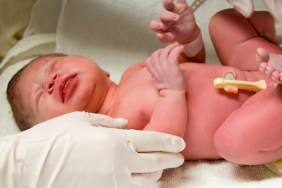Hip dysplasia is one of those things many people have never heard of until they become a new parent. Suddenly, every time their baby is swaddled a parent may wonder if it’s potentially a cause for alarm.
So what is hip dysplasia?
Hip dysplasia is the abnormal development of the bones of the hip joint and mechanical instability of the hip joint. “Risk factors associated with DDH (Developmental Dysplasia of the Hip) include breech position at birth, female sex, family history and certain types of swaddling,” says Jay Lovenheim, D.O., F.A.A.P., a pediatrician at Lovenheim Pediatrics in West Orange New Jersey. DDH is often something that is picked up by examining a newborn infant’s hips and noting some instability. “It’s something most pediatricians should be screening for if there is a history of any of factors that may predispose someone to have DDH. If missed in an infant, it can be found in some toddlers with abnormalities in walking.”

What are treatment options for hip dysplasia?
Like with most things, the earlier DDH is detected, the simpler and more effective the treatment and the better the long-term outcome will be. “If picked up early, the treatment is often just observation or a special type of brace called a Pavlik harness,” says Dr. Lovenheim. “In kids older than six months in whom treatment has been ineffective or in a child who has DDH that was picked up later in life, then surgery is usually the best method to correct the issue.”
If your baby was born in a breech position or you have a family history of DDH, Dr. Lovenheim suggests getting ahead of any potential problem by consulting with your pediatrician. “Also if you think your baby’s hips don’t feel right, then bring that to your doctor’s attention.”
Read On About Newborns:
- Some Moms Lick Their Newborns…Should You?
- 12 Stunningly Beautiful Newborn Baby Pictures
- Colic Won’t Kill You But It Will Make You Crazy








